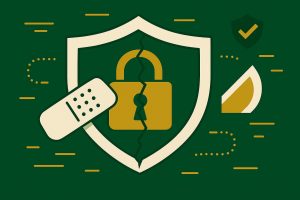In the digital age, data breaches have become a constant threat to organizations of all sizes. High-profile incidents have exposed sensitive information, damaged reputations, and resulted in significant financial losses. By examining the causes and consequences of major data breaches, businesses can learn valuable lessons and implement effective strategies to safeguard their information assets.
Understanding Major Data Breaches
What Is a Data Breach?
A data breach occurs when unauthorized individuals gain access to confidential data, such as customer records, financial information, or intellectual property. These incidents can result from cyberattacks, insider threats, or even simple human error.
Notable Examples
-
Equifax (2017): Hackers exploited a known vulnerability, compromising the personal data of over 140 million people.
-
Yahoo (2013-2014): A series of breaches affected all three billion user accounts, largely due to weak security practices.
-
Target (2013): Attackers accessed payment card data of 40 million customers through a third-party vendor.
Each of these breaches highlights different vulnerabilities and underscores the importance of robust security measures.
Common Causes of Data Breaches
1. Weak or Stolen Credentials
Many breaches begin with compromised passwords or credentials, often obtained through phishing or brute-force attacks. Weak password policies and lack of multi-factor authentication make it easier for attackers to gain access.
2. Unpatched Software
Failure to update software and apply security patches leaves systems vulnerable to known exploits, as seen in the Equifax breach.
3. Insider Threats
Employees or contractors with access to sensitive data can intentionally or accidentally cause breaches. Insider threats are particularly challenging to detect and prevent.
4. Third-Party Vendors
Vendors and partners with inadequate security controls can become entry points for attackers, as demonstrated by the Target breach.
5. Human Error
Simple mistakes, such as misconfigured databases or sending sensitive information to the wrong recipient, can expose critical data.
The Impact of Data Breaches
Financial Losses
Data breaches can result in direct financial losses from theft, regulatory fines, and legal settlements. The average cost of a data breach continues to rise each year.
Reputational Damage
Loss of customer trust and negative publicity can have long-term effects on a company’s brand and market position.
Regulatory Consequences
Non-compliance with data protection laws can lead to significant penalties and increased scrutiny from regulators.
Lessons Learned from Major Breaches
1. Prioritize Security Updates and Patch Management
Regularly updating software and promptly applying security patches can prevent attackers from exploiting known vulnerabilities. Automated patch management tools can help ensure no critical updates are missed.
2. Implement Strong Authentication Measures
Enforce strong password policies and require multi-factor authentication for all users. This reduces the risk of unauthorized access, even if credentials are compromised.
3. Monitor and Control Third-Party Access
Conduct thorough security assessments of vendors and partners before granting access to your systems. Limit third-party access to only what is necessary and monitor their activities continuously.
4. Educate Employees on Security Best Practices
Regular training helps employees recognize phishing attempts, social engineering, and other common attack vectors. Simulated phishing exercises can reinforce awareness and reduce the likelihood of human error.
5. Encrypt Sensitive Data
Encrypt data both at rest and in transit to ensure that even if it is accessed by unauthorized parties, it remains unreadable. Use strong encryption standards and manage encryption keys securely.
6. Develop and Test Incident Response Plans
A well-prepared incident response plan enables organizations to react quickly and effectively to breaches. Regular drills and updates ensure the plan remains relevant as threats evolve.
7. Limit Data Collection and Retention
Collect only the data you need and retain it for the shortest time necessary. This reduces the amount of information at risk in the event of a breach.
How to Protect Your Company’s Information
Conduct Regular Risk Assessments
Identify and evaluate potential vulnerabilities in your systems, processes, and supply chain. Use the findings to prioritize security investments and remediation efforts.
Invest in Advanced Security Technologies
Deploy firewalls, intrusion detection systems, endpoint protection, and security information and event management (SIEM) solutions to detect and respond to threats in real time.
Foster a Culture of Security
Make cybersecurity a core value within your organization. Encourage employees to report suspicious activity and reward proactive security behavior.
Stay Informed About Emerging Threats
Keep up to date with the latest cyber threats, attack techniques, and regulatory requirements. Participate in industry forums and collaborate with peers to share intelligence and best practices.
Major data breaches serve as stark reminders of the importance of robust cybersecurity practices. By learning from past incidents and implementing comprehensive security measures, businesses can protect their information, maintain customer trust, and ensure long-term success in an increasingly digital world.




